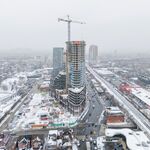P
Paolo
Guest
Well, Highway 7 was numbered in 1920, but only from Guelph west. The piece through Brampton was added sometime in the 1920s. So when was Queen and Boivard named? The roads are certainly older, but I don't know when they were named. I'd assume Queen Street long pre-dates the 1920s.
I may be an old fart, but when the townships were being divided up, the dividing line that split a concession east/west and north/south typically is a main provincial highway.
You may want to forget that hurontario street was known as highway 10, however. it made up the basis of how your city streets are named. anything west of highway 10, is consession 1 WHR and anything east of highway 10 is called consession 1 EHR. this means a lot, its how the street numbers got their designation, and it allows us to find if a street is east or west.




